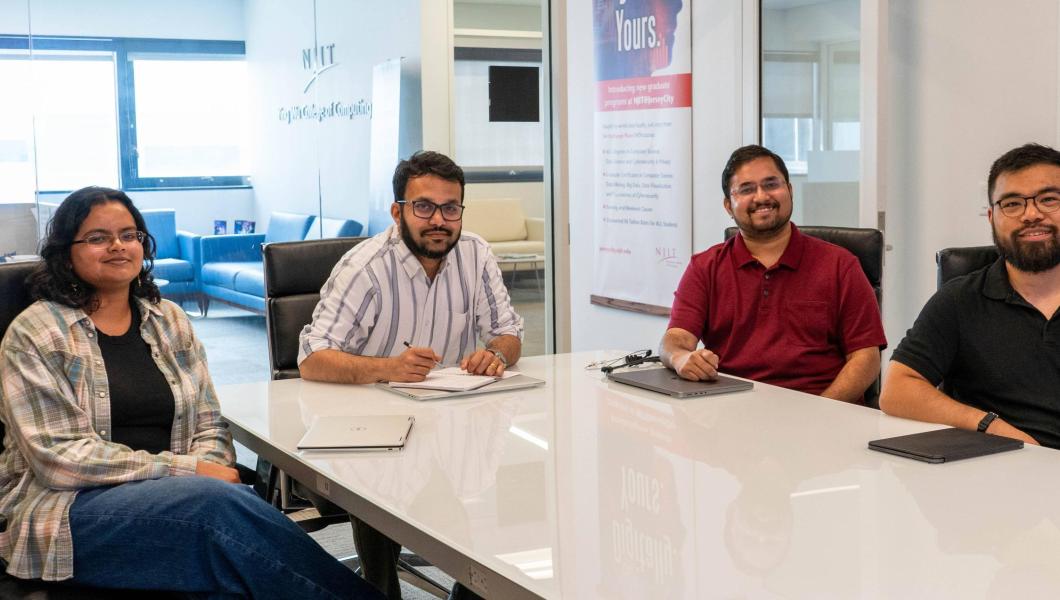NJIT and Israeli Engineers Create Clean Water Tech with Added Industrial Benefit

Environmental safety and corporate interests tend not to match, but engineers at NJIT and Israel's Ben Gurion University of the Negev found a way to filter dangerous nitrate from water while also reducing the energy needed to create industrial ammonia.
The research, Electrified Membrane System for Chemical-Free Ammonia Production / Separation from Nitrate Containing Wastewater, is supported by $450,000 in funding from the U.S.-Israeli Binational Science Foundation. It's related to a wider effort of removing hazardous compounds from water, and to membrane fouling research, both developed by many of the same faculty at NJIT and Israel's Ben Gurion University of the Negev as part of the universities' joint Institute for Future Technologies formed in 2021.
"The first problem is there's a lot of pollutants in wastewater that are bad for humans to consume. One of those is nitrate. Excessive nitrate in the water leads to health problems and various diseases for humans and even wild animals. It can get into the groundwater from industrial waste and things such as agricultural runoff. As we say in the proposal, there's 23 million people who are drinking water that has nitrate above the EPA limit. The limit is 50 milligrams per liter," explained NJIT's Joshua Young, assistant professor of chemical and materials engineering.
"Nitrate could get into wells. There are still a lot of remote residents that rely on groundwater in the U.S and around the world. They do not have a drinking water supply. In the well water there is a very high likelihood they're going to get exposed to different types of pollutants including nitrate, or maybe arsenic or different kinds of stuff," added Wen Zhang, also of NJIT, who is an associate professor of civil and environmental engineering.
Young and Zhang said there are two common problems caused by excess nitrate in water. One is methemoglobinemia, a blood disorder that prevents sufficient oxygen flow. The other is eutrophication, which means too many nutrients are in the water, in turn causing extreme algal growth.
In addition, "There's a second problem that we're trying to solve," Young said. "We want to be able to make ammonia. This is used particularly in fertilizer but also in many, many other applications. Right now we take nitrogen, this is a very stable molecule, and through a very energy-intensive process called the Haber-Bosch process, we convert that into ammonia. That's how we get all of our ammonia for fertilizer and things like that."
But that century-old biological process is energy intensive, Young said. So instead, the team developed a chemical process. "Our thinking for this proposal was to remove nitrate from the water, it still contains nitrogen, but it should take less energy to convert it into ammonia. So instead of producing N2 [nitrogen], we convert NO3 [nitrate] into NH3. It should take significantly less energy."
Then there's the membrane mentioned in their proposal title. It performs filtering and conversion processes, a U.S. patent-pending technology filed by Zhang’s group at NJIT. He synthesizes copper-based and copper-oxide nanoparticles, among many other materials, as the electrocatalysts to enable chemical conversion during filtration. Young’s group further applied machine learning technology to determine which materials would work best. Machine learning allows them to investigate 50-100 materials at once. Meanwhile, Ben Gurion Senior Lecturer Avner Ronen is working on anti-fouling mechanisms of this novel membrane technology to keep the filter from clogging.
The future probably holds commercialization. "Our group filed a patent for this invention of the unique three-phase interface at the cathodic membrane, to couple both the nitrate-ammonia reaction and ammonia transfer/stripping for recovery. This coupled interface design is the breakthrough," said Zhang.
Behind the scenes, that's where NJIT doctoral student Jianan Gao plays a major role. "I do plan to form a startup company in the next few years," he said. "I believe the biggest challenge will be to change traditional perceptions of the wastewater treatment and energy industry. When pursuing innovative ideas, there will always be skeptics. To overcome this challenge, I plan to take a proactive approach and complete one or two small-scale sewage plant renovations to showcase the economic benefits to potential investors."
Zhang is encouraging Gao to pursue a grant from the National Science Foundation Innovation Corps, as NJIT is a partner in a regional I-Corps hub with Princeton, Rutgers and other notable universities.
Describing the physical device, "Our reactor is equipped with core components that include a DC power supply, peristaltic pump, and membrane flow cell, ensuring efficient and reliable performance," Gao explained. "Designed to occupy a compact area, our reactor can be conveniently placed by a river or wellhead, without taking up too much space. … With a physical area of a monolithic membrane ranging from 0.5 to 10 meters squared."
"Additionally, the membrane modules can be stacked, making it possible to accommodate a larger volume of water without taking up too much physical space … The entire single electrochemical reactor volume (including the power supply and pump) can be controlled within 1 cubic meter, making it an ideal solution for limited-space environments."

